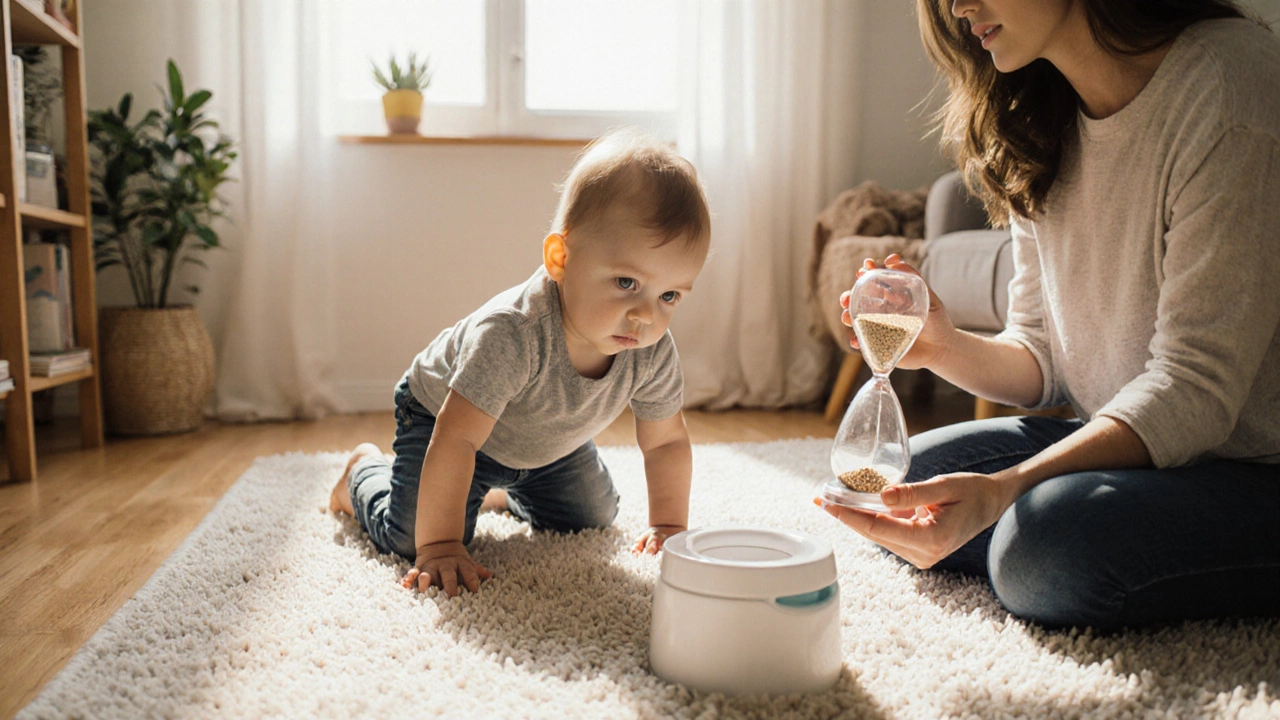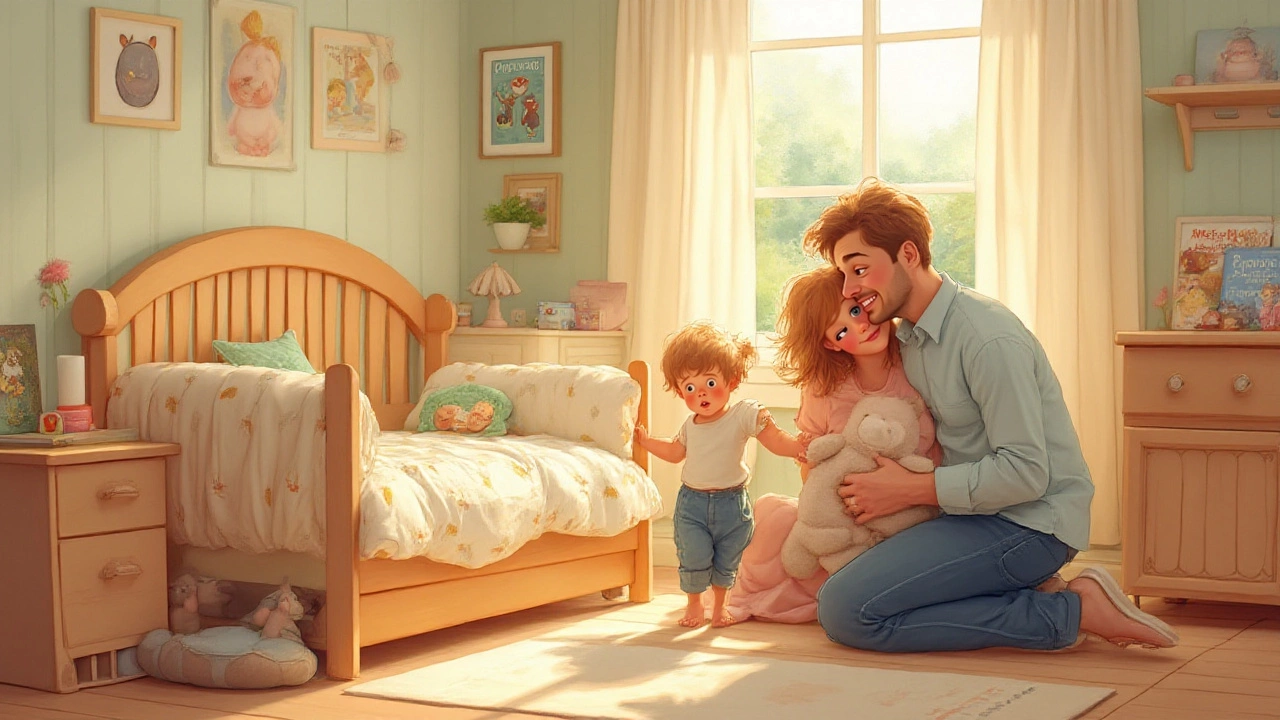Is It Okay to Baby Wear All Day? Pros, Tips, and Reality Checks

Ever feel like babywearing is the only way to actually get things done? You're not alone. Whether it's laundry, emails, or just grabbing a snack, strapping your little one into a carrier can feel like unlocking superpowers. But a question lingers for a lot of parents: is it cool—or even safe—to keep your baby in a carrier basically all day?
Babies love being close, and many will snooze better or fuss less when nestled against you. Some experts say the closeness can help babies feel secure and even boost brain development. Still, no one wants to risk making their baby uncomfortable, or affecting growth and movement. The trick is figuring out how long is “too long,” and how to keep both you and your baby happy, snug, and safe during those marathon babywearing sessions.
- Why Parents Choose Babywearing All Day
- How Long Is Too Long? Myths vs. Facts
- Comfort and Safety Hacks for All-Day Carriers
- When Your Baby Needs a Break: Reading the Signs
Why Parents Choose Babywearing All Day
There’s a reason you see so many parents wearing their babies everywhere, from dog parks to grocery aisles. Babywearing, especially in baby carriers that fit right, makes life smoother for both parent and baby. It’s not just about convenience, though. There are real, practical reasons families end up doing it for hours at a time.
The main draw? Babies want to be close. Human babies are biologically wired to stay near their parents—it helps with bonding, keeps them calm, and even helps regulate their body temperature and heartbeat together with yours. In places where babywearing is part of daily life, babies are proven to cry less compared to those placed down more. According to a 1986 study published in Pediatrics, babies held for at least 3 extra hours per day cried 43% less during the day and 51% less at night. Not bad if you’re aiming for a quieter house.
Moms and dads often say babywearing helps them multitask—cooking, cleaning, and even working from home become way easier with two hands free and a happy baby along for the ride. For some parents, it’s about getting outside or wrangling an older sibling while keeping the little one calm. Baby carriers also make outings more doable, especially if you’re skipping strollers on public transport or busy sidewalks.
There’s a mental health angle, too. Keeping your baby close with a baby carrier can help ease feelings of postpartum anxiety or depression for some parents. The constant contact releases oxytocin, aka the "feel-good" hormone. It can make you feel calmer and more connected—not just your baby, but you too.
- Babies tend to nap longer when held
- Parents can read baby’s cues more quickly
- Lightweight, ergonomic baby carriers help avoid back and shoulder pain
- The closeness can boost breastfeeding success rates
Here’s a glance at why parents love all-day babywearing:
| Reason | Benefit |
|---|---|
| Less crying | Babies are soothed by movement and closeness |
| Hands-free parenting | Easier multitasking and mobility |
| Bonding | Physical closeness supports emotional development |
| Public outings | No need for bulky strollers |
| Mental health boosts | Oxytocin can reduce stress and anxiety |
Long story short: babywearing all day works for a lot of families because it checks so many boxes—comfort, practicality, emotional connection, and even a little more sleep for both of you.
How Long Is Too Long? Myths vs. Facts
If you search for answers on how long you can keep your baby in a baby carrier, you’ll get everything from “never more than an hour!” to “all day is totally fine!” So, what’s actually true?
There's no official limit, but most pediatricians say that what really matters is how your baby is feeling and whether you’re mixing in time for free movement. Babies need time out of the carrier for a reason—floor play and tummy time help them build muscles and explore their world.
Here’s what the experts and real-life parents have picked up about all-day babywearing:
- No magic number: One or two hours at a time is common, but some parents do wear for much longer—especially with newborns who are clingy. Just pay attention to breaks for feeding, diaper changes, and free wiggle time.
- Watch for cues: Fussiness, sweating, red marks, or any trouble breathing? That’s the cue to take your baby out—even if you were comfy for hours before.
- Developmental experts recommend balancing baby carriers with floor time so your baby learns to roll, push up, and crawl. Each baby is different, but aim for at least a few stretches of play on the mat each day.
- Hip-healthy positioning is everything. The International Hip Dysplasia Institute has actually called out unsafe babywearing as a risk factor if your carrier doesn’t support your baby’s legs in the froggy-M position. Using a good carrier cuts risk and makes longer stints safer.
To give you a quick reference, here’s what actual recommendations look like side-by-side:
| Authority | Recommended Max Time in Carrier |
|---|---|
| American Academy of Pediatrics | No strict limit – Focus on baby cues, breaks, free movement |
| International Hip Dysplasia Institute | No strict limit – Emphasizes proper hip support and regular movement out of carrier |
| Popular Parenting Groups | 2 hours at a time, or until either of you needs a break |
Bottom line: There’s no one-size-fits-all time limit for babywearing. What matters most is switching it up, following your baby’s lead, and checking their position often. Don’t stress if you have a stage-five clinger—just remember to get those movement breaks in when you can.

Comfort and Safety Hacks for All-Day Carriers
No matter how much you love babywearing, spending hours with a little body pressed against yours can get tricky fast if you’re not doing it right. The good news? A few smart moves can make all the difference for your comfort and your baby’s safety. Let’s break down what actually works in real life.
First, fit matters. The right baby carrier should hold your baby high and snug on your chest, close enough to kiss. Their back needs to stay supported, and their chin shouldn't be tucked down onto their chest—that can mess with their breathing. Double-check the instructions for your specific carrier, but a lot of pros use the "M-position" or "frog-leg": knees higher than the bum, thighs spread, especially for little babies.
- Support for you: If your lower back is sore or your shoulders feel like they’re on fire, something’s off. Use carriers with wide, padded straps and a waistband to spread the weight. Adjust the straps often; many parents realize halfway through the day that things have gotten way too loose or tight.
- Switch it up: You don’t have to use one carrier all day. Some brands have lightweight wraps for hot weather and structured backpacks for hiking or longer chores. Try a few to see what your body can handle for longer stretches.
- Check baby’s temp: Babies heat up quickly in carriers. Dress them in a light onesie if you’re going to wear them for hours and keep an eye out for sweat or flushed skin. Layers are easy to adjust without getting your baby out completely.
Safety should always trump “just ten more minutes.” If your baby slumps, gets fussy, or stops responding, take them out for a quick reset. And don’t forget about airflow. Keep fabric clear of your baby’s face—no one wants a stuffy snuggle.
A recent survey published in 2023 found that 78% of parents who used wide-strap carriers reported less back and shoulder pain than those using narrow-sling styles. Here’s a quick breakdown:
| Carrier Type | Lower Back Pain | Shoulder Pain |
|---|---|---|
| Wide-Strap/Structured | 22% | 19% |
| Narrow-Sling | 54% | 48% |
Trust your gut. If something feels off for you or your baby, take a break and adjust. You’re both figuring this out together, and a few tweaks can mean hours of happy, safe babywearing.
When Your Baby Needs a Break: Reading the Signs
Even the best baby carriers in the world can't make your little one want to be close 24/7. Babies, just like adults, need to move around, stretch, and change positions. Sometimes, too much time in the same spot—even the coziest one—can leave them cranky or stiff. Miss these signals, and you risk dealing with a meltdown or, less obvious but just as important, minor physical issues.
So, what should you watch for while babywearing for longer stretches? Here are the real-life cues that scream it's time for a break:
- Fussiness that doesn’t pass: Not all cries mean the same thing. If your baby is suddenly irritated after a while in the carrier and doesn’t settle quickly with gentle rocking or bouncing, it’s time for a change of scenery.
- Wiggling or arching their back: Babies get restless when they want to move. If your baby tries to twist, arch away from you, or wriggle non-stop, they might be craving some time on the playmat to kick and stretch.
- Red marks, especially around the legs: Check your baby’s skin often—especially behind their knees and around the hips. Pressure marks or deep lines mean the carrier might be too tight or your baby’s had enough for now.
- Overheating: Carriers are warm by design. If your baby feels hot and sweaty, has reddish cheeks, or shows signs of discomfort from heat, take a break fast.
- Falling asleep at the wrong times: Sure, the cozy snuggle knocks most babies out, but regular excessive naps in the carrier can mess with sleep routines and daylight movement.
Dr. Emily Kennedy, a pediatrician at Seattle Children's, tells parents to "swap out the carrier for a flat surface every couple hours during the day, so babies can move and hit their physical milestones, like rolling and reaching." That’s hard to do if they’re strapped to your chest non-stop.
If you want a quick cheat sheet, here’s what to check every hour or so:
| What to Check | What It Means |
|---|---|
| Are your baby's feet and hands warm but not sweaty? | Good temp, not overheating |
| Is baby moving limbs freely? | No pinched nerves or poor positioning |
| Is skin free from red marks? | No pressure or chafing |
| Is baby calm and responsive? | Still comfy and happy |
And hey, trust your gut. If something feels off or your baby seems unhappy in the baby carrier, a quick break never hurts. Let them wiggle, roll, or just hang out freely for a bit. They’ll show you when they’re ready for round two of snuggles and carrying.


